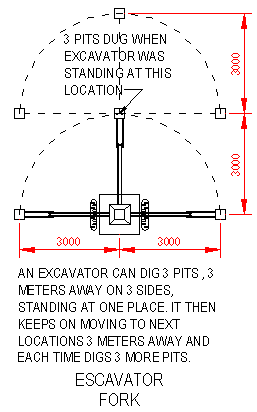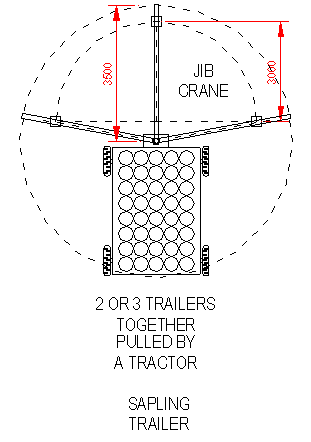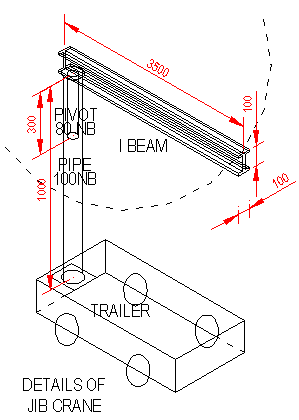
Pongamia Pinnata
Jatropha
Mission
Feasibility Study
Lectures
Lamp Oil
Plant
Germination
Drip Irrigation
Soil Test
Pre-Plantation
Plantation
Post-Plantation
Large Plantation
Why Jatropha?
Economics
Oil Yield
Training
eBook
View Point
Contract Farming
NGO Model
Analysis
C D M
Bio ATF
Insurance


F A Q
Consultancy
Veg Oils
BioDiesel
Algae
Herbal Product
Climate Adaptation
Contact Me
My Resume
 |
Satish Lele lelejatropha@gmail.com |
Before setting up a large plantation, we should take into consideration, local conditions and local facilities available. A detailed plan of the plantation area should then be drawn with contour lines. This plan should be to scale and plan should indicate existing roads, north direction, buildings like sheds or storage godowns, water well etc. On the same plan, land should be earmarked for future constructions or amenities. This will avoid loss of some well grown jatropha trees at a later date. All plans should be finalized before the start of plantation.
The entire land should be fenced before start of plantation. Normally jatropha is not browsed by animals, but fence should protect the soil from erosion and trespassing by human beings. Stones lying around can be used to create a wall around the plot. This will form dead fencing, on which a live fencing of jatropha or cactus can be set up. These can act as wind breaks for hot dry winds.
Once the land is selected, considering the slope of land, land should be divided into different segments. If the land is sloping, bunds can be created at contour lines. If there are water streams, small walls should be erected along the contours. The length of stream should be as small as possible. Though plantation can be done without any cleaning activities, it is advisable to partly clean up the area. Tall trees can be left as it is. All small shrubs and bushes on the soil should be cut above the roots. These can be used as fire wood. This method stops soil erosion. The left over roots eventually die and provide green manure or composting fertilizer. When these are cut twice a year, these roots and stumps die in 3 to 4 years. If the land has thorny plants, these should be cut and burnt, so that the thorns do not pose any problem later.
Plantation in good land: The soil should be tilled and soil should be made porous. Inter cropping can be done in good quality lands for first 3 to 4 years. All weeds and fungus should be completely rooted out. Weedicides like Glyphoset can be used to remove the weeds. Since deep ploughing can not be done in such soils, weeds can grow very fast if not controlled by weedicides. Hence all weeds should be destroyed completely, if required by burning. During pre-plantation activities, some leguminous plants are sown and they are buried in soil before these flower.
Based on growth pattern of the variety of Jatropha planted and method of harvesting, number of plants in the area is decided. If the plants are planted densely, Jatropha can be planted in square formation of 2 meter by 3 meters. You can get more income from densely planted trees in first few years but in later years, the production of seeds is same. Some wild varieties grow laterally as well vertically, and produce more seeds per tree. But less number of these can be planted. In this case, trees can grow well and yield the same amount of seeds per unit area. Also spraying of water on such trees is not difficult. In case of plantation, it is advisable to keep the plants short in height. This can be achieved by cutting end of branches from time to time. If the distance between two plants is more, then picking of fruits and spaying of water is easier.
Fresh Jatropha Plantation: In this picture you can see how the Jatropha Seedlings are planted in 3 meters by 2 meters formation. The space in between the two rows should be sufficient to run tractor trailer from one end to other. A sloping land is better for drainage of excess rain water which is collected in a pond at the end of slope.
Land should be tilled in the two months before rainy season, and all dry vegetation should be burnt and destroyed before plantation. Once the monsoon starts, land is lightly tilled and weeds put down in soil, with a gap of 8 to 10 days, twice or thrice. The weeds grow only during first two years. After that entire land is covered by Jatropha, and weeds have less chance to grow. Days on the onset of monsoon rains is the ideal period for Jatropha Plantation.
Pits of standard size, are dug initially throughout the year, based on the slope of land, availability of water and quality of soil. Pits of 300 mm long, 300 mm wide and 300 mm deep are dug in square formation. A layer of dry leaves is spread at the bottom up to about 50 mm and insecticide is sprayed on Jatropha plant.
Post Hole Digger: This is an attachment for tractor. Post Hole Digger has a rotating cutting screw. Some have 3 attachments for one tractor. There are trolley mounted diggers. A man can carry Post Hole Digger from place to place and dig holes. With a hand held digger, a man can carry Post Hole Digger from place to place and dig holes.
Planting Methods: Jatropha Plantation can be done by sowing seeds or by planting branches of existing trees. The land is marked in squares of 3 meters by 2 meters all along. Saplings made from seeds or from branch in plastic bags, is inserted at each intersection pit. Plants grown from seeds or branches in soil can also be planted. This method has advantage that, the seedlings can be cultivated throughout the year, and can be watered easily in a small area.





